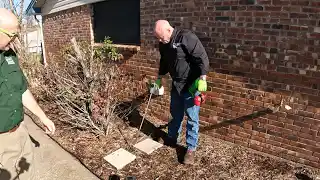Ensuring a watertight and leak-free plumbing system is crucial for maintaining the integrity and functionality of your home. One of the simplest yet most effective tools plumbers use to achieve this is Teflon tape, also known as plumber’s tape or PTFE tape. However, applying Teflon tape incorrectly can lead to frustrating leaks and costly repairs. In this guide, we’ll explore the different types of Teflon tape, the correct application methods, and common mistakes to avoid, ensuring your plumbing connections remain secure and leak-free.
Introduction
When assembling plumbing fixtures, proper sealing is essential to prevent leaks and ensure the longevity of the system. Teflon tape serves as a lubricant and sealant, facilitating easier assembly of threaded connections and creating a reliable barrier against leaks. Understanding the various types of Teflon tape and mastering the correct application techniques can significantly enhance the effectiveness of your plumbing work.
What is Teflon Tape?
Teflon tape is a thin, non-adhesive tape made from polytetrafluoroethylene (PTFE). It is widely used in plumbing to seal pipe threads, ensuring a tight and leak-proof connection. Teflon tape reduces friction between threads, making it easier to screw fittings together while providing a durable seal that prevents water, gas, or other fluids from escaping.
Key Benefits:
- Lubrication: Makes screwing fittings together smoother and easier.
- Sealant: Provides a watertight and airtight seal to prevent leaks.
- Protection: Guards against corrosion and wear on threaded connections.
Types of Teflon Tape
Not all Teflon tapes are created equal. Each type is designed for specific applications, ensuring optimal performance based on the plumbing requirements.
1. White Teflon Tape
- Use: Primarily for water lines.
- Characteristics: Standard PTFE tape, ideal for sealing threaded connections in water systems.
- Application: Use on connections where water is conveyed, such as pipes and valves.
2. Yellow Teflon Tape
- Use: Designed for natural gas lines.
- Characteristics: Thicker than white tape, specifically formulated to handle gas pressure.
- Application: Essential for gas fittings to prevent leaks and ensure safety.
3. Silver Teflon Tape
- Use: Suitable for stainless steel pipes.
- Characteristics: Extra-dense and thicker, providing a robust seal for stainless steel threads.
- Application: Ideal for high-density and heavy-duty connections where stainless steel is involved.
4. Pink Teflon Tape
- Use: For heavy-duty applications.
- Characteristics: Thicker and more durable, suitable for high-pressure systems.
- Application: Best for industrial plants or systems requiring extra sealing strength.
5. Blue Monster Teflon Tape
- Use: Multi-purpose tape suitable for various applications.
- Characteristics: Versatile and reliable, good for multiple types of plumbing systems.
- Application: Perfect for homeowners, DIY enthusiasts, and professional plumbers needing a versatile tape option.
How to Apply Teflon Tape Correctly
Proper application of Teflon tape is essential to achieve a reliable seal. Follow these steps to ensure your connections are secure and leak-free:
1. Clean the Threads
- Why: Dirt, rust, and debris can prevent the tape from adhering properly.
- How: Use a wire brush or cloth to clean the threads thoroughly before applying the tape.
2. Choose the Right Tape
- Consider: Select the appropriate type of Teflon tape based on the connection (water, gas, stainless steel, etc.).
3. Wrap the Tape in the Correct Direction
- Direction: Wrap the tape in the clockwise direction, following the direction in which the fitting will be tightened.
- Why: This ensures that the tape does not unravel when the fitting is screwed on.
4. Start at the Second Thread
- Placement: Begin wrapping the tape about one thread back from the end.
- Benefit: Allows the tape to stay under the fitting, preventing it from getting caught or torn during assembly.
5. Apply the Correct Number of Wraps
- Guideline: Typically, three to four wraps are sufficient for most connections.
- Exception: For larger or high-pressure connections, you may need more wraps (e.g., five to seven wraps).
6. Smooth the Tape
- Action: After wrapping, use your fingers to press the tape into the threads, ensuring it adheres well and there are no gaps or overlaps.
- Result: Creates a smooth, even surface for the fitting to seal against.
7. Assemble the Connection
- Final Step: Screw the fitting onto the threaded pipe, ensuring it tightens smoothly without over-tightening, which can damage the threads or the fitting.
Common Mistakes to Avoid
Even with the best intentions, certain errors can compromise the effectiveness of Teflon tape. Here are some common mistakes to watch out for:
1. Applying Tape in the Wrong Direction
- Problem: Wrapping the tape counterclockwise can cause it to unravel when tightening the fitting.
- Solution: Always wrap Teflon tape in the same direction as the fitting will be turned.
2. Using Too Much Tape
- Problem: Overlapping or excessive tape can create bulk that prevents proper sealing or makes it difficult to screw fittings together.
- Solution: Stick to the recommended number of wraps based on the connection size and type.
3. Not Cleaning the Threads
- Problem: Dirt and debris can prevent the tape from adhering properly, leading to leaks.
- Solution: Always clean the threads thoroughly before applying Teflon tape.
4. Starting the Wrap at the Very End
- Problem: Starting at the edge can cause the tape to get caught or torn during assembly.
- Solution: Begin wrapping one thread back from the end to keep the tape in place.
5. Ignoring Flange and O-Ring Connections
- Problem: Some connections, like flare nuts or O-rings, do not require Teflon tape and can be damaged by it.
- Solution: Understand when not to use Teflon tape. For example, O-ring fittings should not have tape applied as it can compromise the seal.
Tips for Effective Teflon Tape Use
- Quality Matters: Invest in high-quality Teflon tape like Blue Monster Teflon Tape for multi-purpose use and reliable performance.
- Consistency: Apply the tape consistently, maintaining an even tension and avoiding wrinkles or gaps.
- Know When Not to Use: Recognize fittings that should not have Teflon tape, such as compression fittings or those with O-rings.
- Double-Check: After applying the tape, double-check your work to ensure there are no loose ends or overlaps that could interfere with the seal.
Conclusion
Applying Teflon tape correctly is a small but vital step in ensuring the reliability and longevity of your plumbing connections. By understanding the different types of Teflon tape, mastering the application process, and avoiding common mistakes, you can prevent leaks and maintain the integrity of your plumbing systems. Whether you’re a homeowner tackling a DIY project or a professional plumber, proper use of Teflon tape is essential for successful plumbing installations and repairs.
Ready to Enhance Your Plumbing Skills?
For more plumbing tips, tools, and professional guidance, visit LeakProo.com. Whether you’re a DIY enthusiast or a seasoned plumber, our resources will help you excel in all your plumbing endeavors. Equip yourself with the knowledge and tools needed to keep your home’s plumbing system running smoothly.




